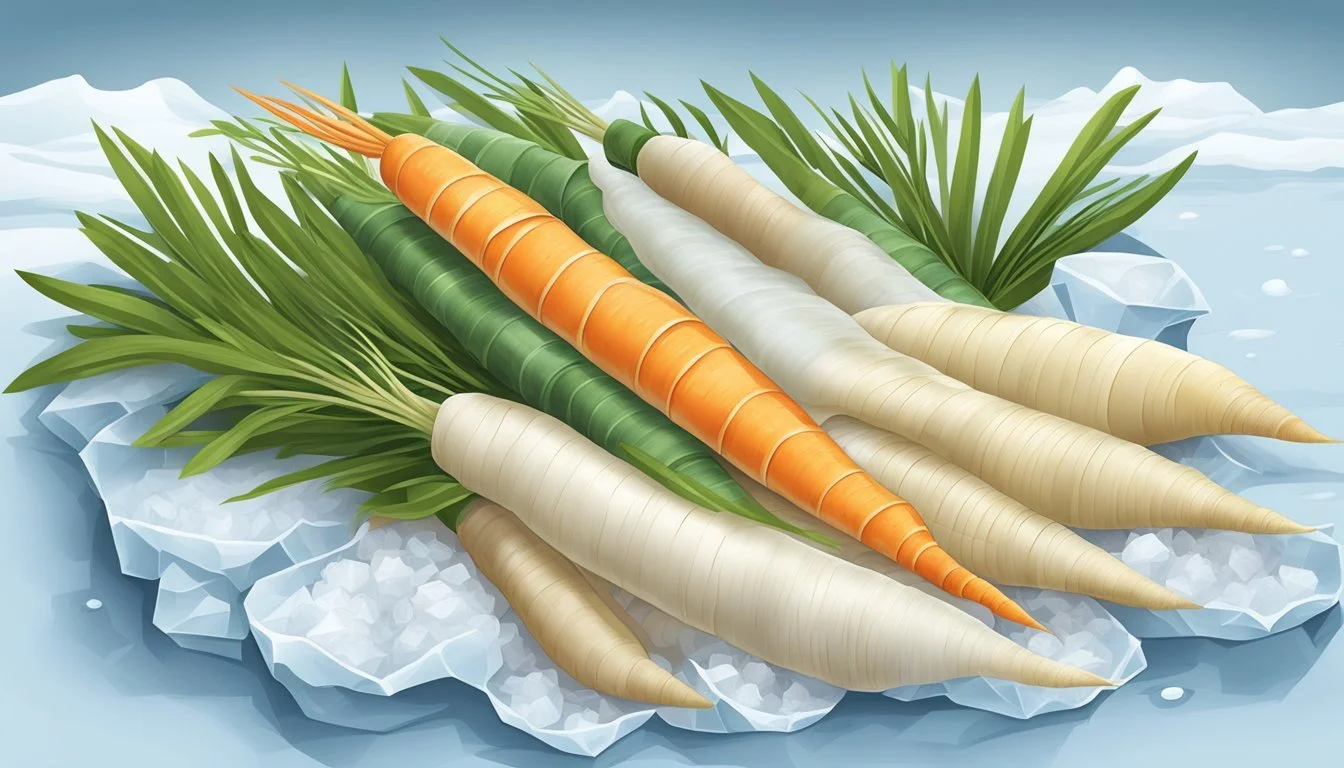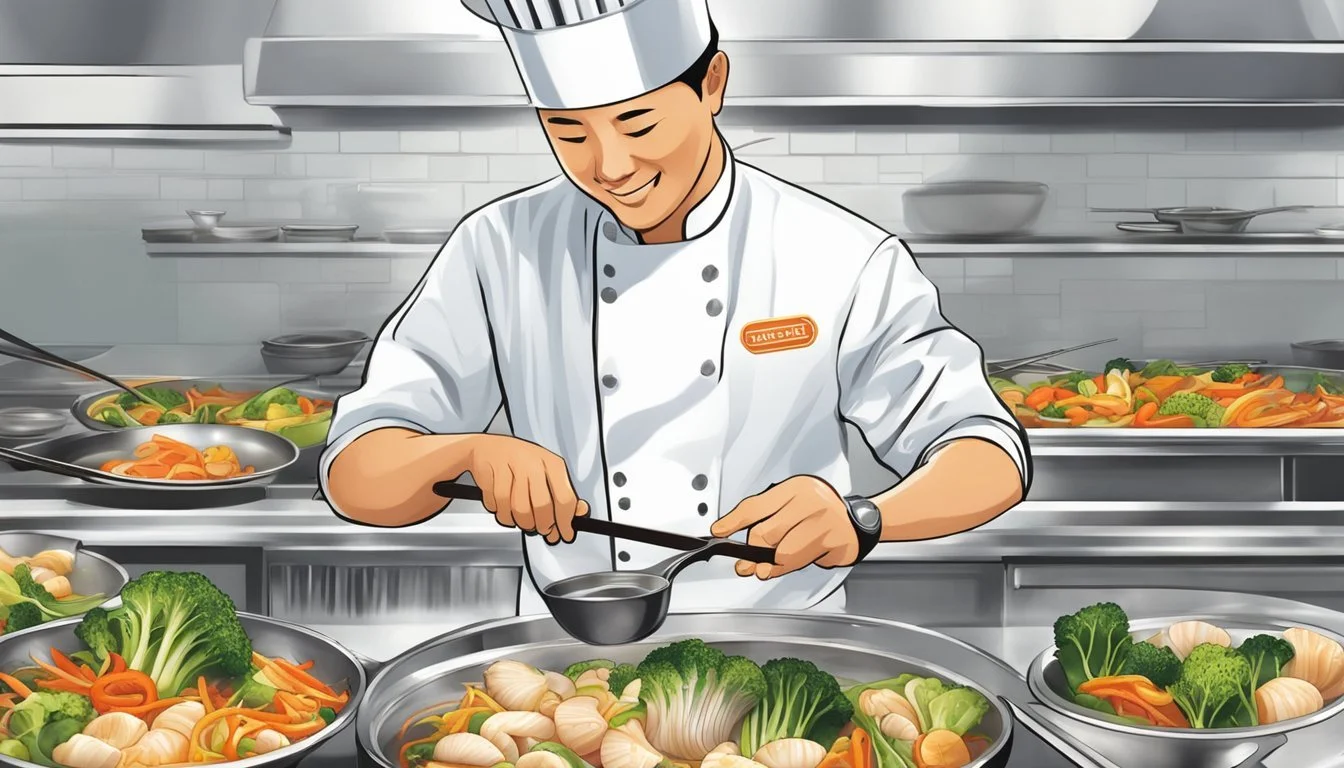Geoduck Substitutes
Best Alternatives for Unique Seafood Dishes
For those seeking a culinary adventure with shellfish, geoduck is a prized delicacy originating from the Pacific Northwest. Known for its unique flavor and firm texture, this oversized mollusk is often served as sashimi or used in various seafood dishes. While geoduck's distinct characteristics make it a standout ingredient, substituting geoduck in recipes can be achieved with other types of clams or shellfish that provide similar flavors and textures.
Native to the Pacific Northwest, where it thrives in a marine environment, geoduck boasts a rich and slightly sweet taste. For those who can't access this rare mollusk, Manila clams, Pacific razor clams, and even the more commonly available quahogs can be used as substitutes. These alternatives will ensure your dishes remain flavorful and enjoyable without compromising too much on the unique qualities that geoduck offers.
Incorporating geoduck substitutes into your recipes can be seamless. For example, Manila clams or quahogs can easily replace geoduck in traditional clam chowder, bringing a similar taste and texture to the dish. By choosing these substitutes, you can still enjoy exquisite seafood flavors reminiscent of the geoduck's native Pacific Northwest origins.
Understanding Geoducks
Geoducks are among the largest burrowing clams, known for their unique habitat and exceptional longevity. They are not only intriguing in their biology but also valued for their culinary versatility and rich nutritional profile.
Biology and Habitat
Geoducks inhabit the coastal waters of the Pacific Northwest, from Alaska to California. They thrive in sandy, muddy, and gravelly ocean floors, burrowing up to three feet deep. These bivalves prefer intertidal and subtidal zones where tides influence the ecosystem. Geoducks are broadcast spawners, releasing larvae that disperse widely, crucial for maintaining their populations.
Physical Characteristics
A geoduck can reach impressive sizes, often weighing up to three pounds and measuring over three feet in length between their shell and siphon. Their long neck, or siphon, extends well beyond their shell, which is typically white and oblong. The siphon is covered in wrinkled skin, contributing to its distinctive texture. These features make geoducks easily distinguishable from other clams.
Nutritional Value
Geoducks provide a valuable source of protein, essential vitamins, and minerals. They are particularly high in iron, aiding in maintaining healthy blood cells. A 100-gram serving of geoduck offers around 14 grams of protein and a low-fat content, making it a nutritious choice. Their nutritional profile supports muscle growth and overall health.
Culinary Profile
In culinary applications, geoducks are prized for their crisp texture and sweet, meaty flavor. They can be eaten raw in sashimi and sushi or cooked in various dishes like chowders and stir-fries. Their unique texture and taste set them apart from other clams and mollusks, offering both versatility and a gourmet appeal to different recipes.
Geoduck Harvesting
Geoduck harvesting involves specialized techniques and strict regulations aimed at ensuring sustainability. It primarily takes place in the Pacific Northwest, where these clams inhabit sandy ocean floors.
Harvesting Techniques
Geoduck clams are typically harvested using methods that involve professional divers. These divers locate the clams and use high-pressure water hoses to loosen the sand and mud around the clam. The goal is to free the geoduck without causing damage.
This process requires skill, as geoducks burrow deep, often up to three feet below the surface. The use of PVC pipes during farming helps young clams grow by protecting them from predators. Unlike traditional clamming, which might use rakes or shovels, geoduck harvesting relies heavily on water to displace the earth and minimize harm to both the clam and its habitat.
Table of Tools Used:
Tool Purpose Water Hoses Loosen sand around clams PVC Pipes Protect juvenile clams
Sustainability and Regulation
Geoduck harvesting is tightly regulated by authorities to ensure the sustainability of the species and their habitat. Regulations include limits on harvest quantities, specific seasons, and protected areas where harvesting is prohibited. These measures are vital in maintaining the population and the ecosystem balance.
Commercial geoduck fisheries in places like Puget Sound are monitored to prevent overharvesting. Environmental impact assessments are conducted regularly to evaluate the ecological effects of the harvesting techniques. Additionally, the farming of geoducks involves installing certain structures that protect the young clams while considering the environmental impact.
Regulatory bodies ensure that wild populations are not depleted, maintaining a balance between commercial interests and environmental conservation. This careful management helps sustain both the economic viability of the geoduck industry and the health of marine ecosystems.
Culinary Applications
Geoduck clams offer versatile culinary applications that appeal to many food enthusiasts. This section explores the methods for their raw and cooked preparations and the best ways to serve and pair these unique clams.
Raw Preparations
Geoduck is often enjoyed raw, taking advantage of its sweet and clean taste. Sashimi is a popular method, where thin slices of the siphon are paired with soy sauce and wasabi.
Salads and ceviche are also excellent choices, showcasing the clam's tender texture. To prepare, marinate geoduck slices in citrus juices, often combined with onions, cilantro, and chilies. Geoduck's natural flavor shines through, requiring minimal seasoning to highlight its taste.
Cooked Preparations
In the kitchen, geoduck can be cooked using various methods. Boiling, frying, steaming, and grilling are common techniques. For chowders and hot pots, adding geoduck enhances the broth with a subtly sweet sea essence.
Fried geoduck can be coated in light batter and fried until golden. Steaming retains moisture and brings out its flavor, often paired with garlic and wine sauces. When grilled, a quick sear retains its tenderness.
Serving and Pairings
Serving geoduck involves complementary flavors that elevate its unique taste. When served as sashimi or in ceviche, pair with a crisp white wine or sake. Grilled and fried geoduck match well with dipping sauces like garlic-butter or soy-based mixtures.
Geoduck in chowders or hot pots pairs brilliantly with crusty bread and a light, refreshing white wine. The clam's distinct yet versatile flavor profile allows it to be paired with a range of accompaniments that bring out its best qualities without overpowering it.
Substituting Geoducks in Recipes
When geoducks are unavailable, certain substitutions can still capture similar flavors and textures to ensure your dishes remain delicious. It’s crucial to choose appropriate substitutes, adjust preparation methods, and understand the differences in flavor and texture.
Choosing Substitute Species
Selecting suitable alternatives is essential for maintaining the integrity of your recipe. Razor clams and oysters are great substitutes due to their briny taste and chewy texture. Another option includes other types of clams like littlenecks or manila clams, which provide a similar sweetness and firm texture. Additionally, mollusks such as abalone or scallops can stand in for geoduck, offering a clean and slightly sweet flavor.
Substitute Key Characteristics Razor Clams Briny, chewy Oysters Briny, tender to slightly chewy Littleneck Clams Sweet, slightly chewy Manila Clams Sweet, firm Abalone Clean, slightly sweet, firm Scallops Sweet, tender but not as chewy
Preparation Adjustments
Substitutes may require different handling and cooking techniques. For razor clams and oysters, ensure thorough cleaning to remove any sand or grit. Scallops need less cooking time due to their delicate texture, while abalone should be tenderized to match the chewiness of geoducks. Adjust slicing thickness for manila and littleneck clams to mimic the meatiness of geoducks. Cooking times might vary; oysters and scallops typically cook faster, so monitor closely to avoid overcooking.
Tips:
Cleaning: Use a stiff-bristle brush to scrub shells.
Tenderizing: Pound abalone gently with a mallet.
Slicing: Cut clams and razor clams thinly for sashimi-style dishes.
Flavor Comparisons
Geoducks are known for their sweet, clean, and crisp taste with a distinct chewiness. Razor clams provide a comparable brininess and slight sweetness, though they are less sweet than geoducks. Oysters add a robust briny flavor but are generally softer in texture. Littleneck and manila clams offer a sweeter profile and similar firm bite. Abalone brings a mild, clean flavor and firm texture, while scallops contribute a sweetness that’s slightly more tender and less chewy.
Understanding these flavor profiles helps in selecting the right substitute to ensure your dish remains flavorful and satisfying.
Conservation and Ethical Considerations
Conservation and ethical considerations of geoduck substitutes involve understanding their impact on the environment and the importance of ethical harvesting practices to ensure sustainability and ecosystem health.
Impact on the Environment
The environmental impact of harvesting geoduck substitutes differs based on the species and method used. Sustainability is crucial in both wild and farmed environments. Overharvesting wild populations can lead to habitat destruction and ecological imbalances.
Aquaculture methods for geoducks must be carefully managed. Improper practices can result in water pollution and negative effects on surrounding marine life.
Regulations are necessary to mitigate these impacts. Effective policies ensure that harvesting is eco-friendly and does not compromise the long-term health of marine ecosystems.
Ethical Harvesting Practices
Ethical harvesting involves ensuring that the practices used do not harm the environment or the species being substituted. Sustainable harvesting techniques include limiting the amount taken from the wild and adopting responsible aquaculture practices.
Regulations are crucial in maintaining ethical standards. Authorities must enforce rules that protect habitats and ensure fairness in the industry.
Collaboration among scientists, policymakers, and harvesters can lead to improved methods that are both ethical and sustainable. This holistic approach helps maintain biodiversity and supports the industry's longevity.
Cultural and Regional Significance
Geoducks have deep cultural and regional roots, particularly in the Pacific Northwest. These clams hold immense value not only as a culinary delicacy but also in indigenous traditions where they are greatly revered.
Geoduck in Pacific Cultures
In the Pacific Northwest, geoducks are a staple of local cuisine and are celebrated for their impressive size and unique texture. They are especially popular in Washington State and British Columbia, where they are harvested both commercially and recreationally.
These clams are known to be enjoyed in various dishes such as sashimi in Japan, highlighting their international appeal. In places like Olympia, Washington, the geoduck is more than just food; it serves as a regional symbol, reflecting the essence of the West Coast culinary scene.
The popularity of geoducks in this region is a testament to their longstanding cultural importance. Their consumption is not just about taste but also about preserving traditional regional practices.
Geoduck in Indigenous Traditions
For indigenous tribes of the Pacific Northwest, like the Lushootseed-speaking peoples, geoducks have held significant cultural value for centuries. These clams are essential in subsistence harvesting, providing an important source of protein and nutrition.
Geoducks are often shared in communal feasts, reinforcing social bonds and traditions. Tribes from Washington State to Alaska have long considered these clams as both a vital food source and a symbol of abundance and longevity.
Additionally, the name "geoduck" itself is derived from Lushootseed, underscoring its indigenous origins and the deep-rooted connection of these communities to the natural resources of their homeland. The integration of geoducks into cultural practices highlights their enduring relevance in indigenous heritage and traditions.







